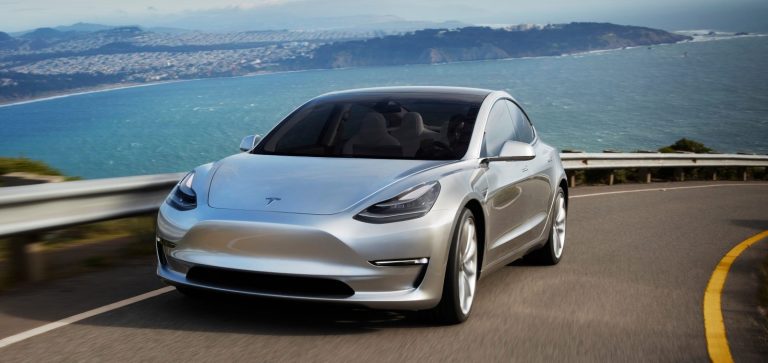
 Tesla’s push-out of a Model 3 production target adds to investor uncertainty about a very ambitious production ramp. But sentiment could change quickly if those fears are put to rest.
Tesla’s push-out of a Model 3 production target adds to investor uncertainty about a very ambitious production ramp. But sentiment could change quickly if those fears are put to rest.
As the sharp selloff following its Q3 report drives home, greed and fear have long played outsized roles in how Tesla Inc.’s shares move.
Bulls filled with visions of Tesla becoming an EV/solar/energy storage colossus will bid shares sharply higher following positive news, and bears convinced the company won’t make good on its big promises and will eventually see its sizable losses catch up to it pounce following bad news.
When good news leads shorts to cover and makes bulls feel as if their optimism has been validated, Tesla rockets higher. When bad news compels shorts to add to their positions and makes some bulls questions theirs, Tesla falls sharply. It’s a story that has been repeating itself for years…though the long-term trend has been very much on the side of the bulls.
Tesla’s Q3 shareholder letter and earnings call, and in particular the commentary Elon Musk and others provided about the company’s ambitious Model 3 production ramp, gives bears the upper hand for the time being. But with Tesla signaling consumer interest in the relatively cheap sedan is as strong as ever, the pendulum could eventually swing back if the company shows signs of putting its current production woes to rest.
Tesla reported Q3 revenue of $2.99 billion (up 30% annually) and adjusted EPS of negative $2.92. Revenue slightly beat a $2.92 billion consensus, while EPS — hurt by giant Model 3 and battery Gigafactory investments — missed a consensus of negative $2.35. Those investments, which included $1.1 billion worth of capital spending, also weighed on free cash flow (FCF); it came in at negative $1.42 billion.
But it isn’t the (largely expected) cash burn that’s bothering investors as much as the push-out of Tesla’s goal of reaching a Model 3 production rate of 5,000 cars per week from the end of Q4 to “late Q1.” It also didn’t help that Tesla didn’t quite reiterate a prior goal of reaching a weekly production rate of 10,000 by late 2018; the company now only says “it has always been our intention to implement that capacity addition after we have achieved a 5,000 per week run rate.”
Also: Tesla, which had previously said it will achieve a positive gross margin on Q4 Model 3 sales, now only says it aims for a “breakeven” Model 3 GM by quarter’s end. The company still insists Model 3 margins “should improve rapidly in 2018 to our target of 25%.”
Tesla shares — already pressured in recent weeks by growing reports of Model 3 production challenges and parts order cuts, declined 6.8% to $299.26 on Thursday, and have hit their lowest levels since May. They’re still up 39% on the year.
Aside from the Model 3 target push-out, Tesla shares might be pressured by the introduction of a GOP tax bill that does away with a $7,500 electric-car tax credit. But the bill still has a ways to go before passing.
On the earnings call, Musk claimed — in comments that Apple Inc. (AAPL – Get Report) investors following reports of production issues for the iPhone X’s front-camera dot projector module can sympathize with — that battery module assembly is “the primary production constraint” for the Model 3. “There are four [production] zones to module manufacturing…zones three and four are in good shape, zones one and two are not,” Musk said.
He added that a subcontractor responsible for “zone two” had done a poor job, and that Tesla didn’t realize the scope of the problem until recently.
“We had to rewrite all of the software from scratch, and redo many of the mechanical and electrical elements of zone two,” Musk proclaimed, but qualified his remarks by saying Tesla still has a lot of work left. ” [T]he software working with the electromechanical elements need to be fabricated and installed, and getting those atoms in place and rebuilt [takes], unfortunately, a lot longer, and has far more external constraints, than software.”